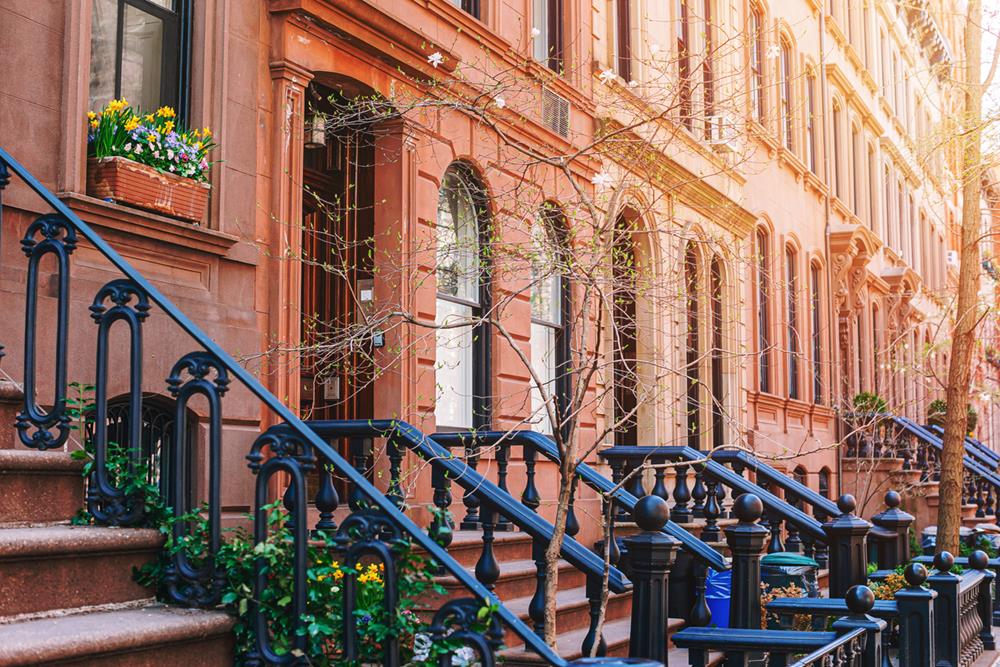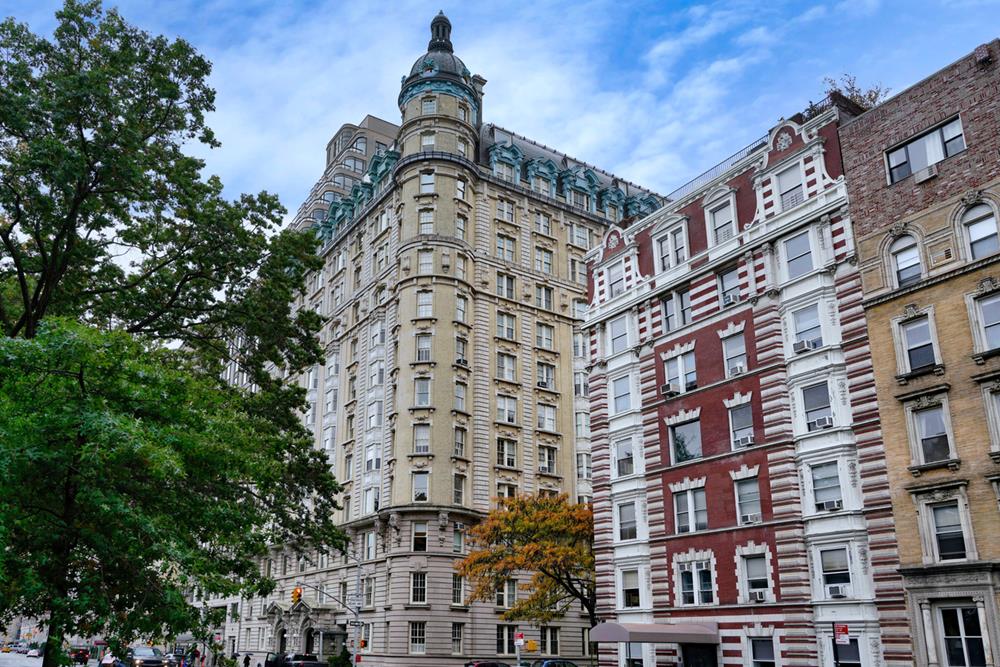Finding an apartment in New York City can often feel like a Herculean task given the city’s notorious real estate market, characterized by high demand, steep prices, and rapid turnover. Whether you’re a newcomer eager to make the Big Apple your home or a seasoned local navigating yet another move, understanding the ins and outs of the NYC apartment hunt is crucial. This comprehensive guide will walk you through the various strategies, tips, and tools that New Yorkers use to find their next home.
Challenges and Peculiarities of The New York City Apartment Market
Navigating the New York City apartment market is akin to embarking on an urban adventure, filled with its own unique set of challenges and peculiarities. Unlike any other city in the United States, NYC’s real estate landscape is characterized by its dizzying pace, sky-high demand, and a bewildering array of options that can vary dramatically from one block to the next. The city’s dense population and limited space mean that finding an apartment isn’t just about searching; it’s about strategizing. From understanding the nuances of different neighborhoods to deciphering the complexities of lease agreements, the process requires a level of preparation and savvy that goes beyond the basics of apartment hunting.
The challenges of the NYC apartment market are not for the faint-hearted. Prospective renters must navigate a competitive environment where desirable apartments often get snapped up within days—or sometimes hours—of being listed. This high turnover rate, combined with the city’s diverse and ever-changing real estate inventory, means that success often hinges on one’s ability to act swiftly and decisively. Moreover, the financial aspects of renting in NYC, such as the often-required proof of income that exceeds 40 times the monthly rent, the steep broker’s fees, and the sometimes non-negotiable lease terms, add layers of complexity to the apartment hunt.
Nine Essential Tips in Securing an Apartment in NYC
1. Understanding the Market
Embarking on an apartment hunt in New York City without a grasp of its real estate market dynamics is like navigating a maze blindfolded. The city’s housing landscape is renowned for its breakneck pace, where listings appear and vanish with bewildering speed, often leaving unprepared hunters in the dust. Recognizing this tempo is the first step in aligning your expectations and approach to the rhythm of the city.
- The Swift Pace of NYC Real Estate: In New York City, the term “fast-paced” barely scratches the surface when describing the real estate market. Apartments here can come on the market in the morning and be gone by sunset, with multiple applications submitted within hours of listing. This rapid turnover is a hallmark of the city’s housing scene, driven by high demand and a constant influx of people looking to call NYC home. Preparing for this requires not only vigilance but also readiness to act swiftly when you find a suitable listing. Having your documents and finances in order beforehand can give you a crucial edge.
- Seasonal Fluctuations: The rhythm of the NYC apartment market is also significantly influenced by seasonality. The summer months, in particular, see a spike in activity. This uptick is largely attributed to the academic calendar, with students and recent graduates flocking to the city to start new chapters. This seasonal surge creates a more competitive landscape, with increased demand often leading to higher prices and faster leasing turnovers. If your schedule allows, consider starting your search in the off-peak seasons, such as fall or winter, when competition might be slightly less fierce.
- Geographical Price Variations: One of the most intriguing aspects of the NYC real estate market is the dramatic variation in pricing, not just between boroughs but even from one neighborhood to the next. Manhattan stands as the epitome of high living costs, with areas like the Upper East Side, West Village, and SoHo often commanding premium prices. However, the search for affordability has led many to explore neighborhoods in Brooklyn, such as Williamsburg and Bushwick, and Queens areas like Astoria and Long Island City. Yet, even within these boroughs, prices can fluctuate widely based on factors like proximity to subway lines, park access, and neighborhood amenities.
- Navigating the Market’s Complexities: To effectively navigate the complexities of the NYC apartment market, it’s essential to immerse yourself in its nuances. This means staying updated on market trends, understanding the implications of new housing laws and regulations, and possibly even tracking how major economic or social events might influence the real estate landscape. Engaging with local real estate news, consulting with professionals, and leveraging online resources can provide valuable insights and forecasts.
2. Budgeting Wisely
Navigating the financial intricacies of the New York City rental market is a foundational aspect of your apartment search. The high cost of living, coupled with unique rental requirements, makes budgeting not just a preliminary step, but a critical strategy in securing a home in the city.
The 40-45 Times Monthly Rent Rule
A distinctive feature of the NYC rental landscape is the income requirement imposed by many landlords, often stipulating that tenants must earn an annual income of 40-45 times the monthly rent. This criterion sets a high bar for prospective renters, emphasizing the need for a well-planned budget. For instance, for an apartment renting at $2,500 per month, a tenant would need to demonstrate an annual income of at least $100,000 to $112,500. This requirement ensures landlords that tenants possess the financial stability necessary to meet their rental obligations consistently.
Factoring in Additional Costs
Beyond the rent and income requirements, several other costs need to be considered when budgeting for an apartment in NYC. Utilities such as electricity, gas, and water can add a significant amount to monthly expenses, and in some cases, might not be included in the rent. Internet and cable services are also essential for most households but come at an additional cost.
Budgeting for Security Deposits and Moving Expenses
Security deposits, usually equivalent to one month’s rent, add another layer to the upfront costs of renting in NYC. However, recent regulations cap security deposits at this amount, providing some relief to renters. Additionally, moving expenses, including hiring movers, renting a truck, or buying new furniture, can quickly add up and should be included in your initial budgeting plan.
Creating a Comprehensive Budget
Given these considerations, creating a comprehensive and realistic budget is paramount. Start by determining the maximum rent you can afford based on your income, then subtract the estimated costs of utilities, internet, and any other recurring expenses to ensure the rent is manageable. Don’t forget to account for the upfront costs like the broker’s fee, security deposit, and moving expenses. It’s also wise to have a financial cushion to cover unexpected costs or emergencies.
3. Choosing the Right Neighborhood
Selecting the ideal neighborhood in New York City is as crucial as choosing the right apartment, perhaps even more so. NYC’s diverse tapestry of neighborhoods offers a myriad of lifestyles, cultures, and atmospheres, making the city a place where there truly is something for everyone. However, with such diversity comes the challenge of determining which neighborhood best aligns with your personal and practical needs.
- Proximity to Work or School: One of the first considerations for many when choosing a neighborhood is the commute to work or school. In a city as vast as New York, a seemingly short distance on a map can translate into a lengthy and complex commute. Assessing the proximity and the convenience of transportation options can significantly impact your daily routine and quality of life. Areas well-served by subway lines, buses, or even bike paths can make commuting less of a chore and more a part of the vibrant city life.
- Access to Public Transportation: The availability and accessibility of public transportation are paramount in a city where having a car is more of a burden than a convenience. A neighborhood’s proximity to subway stations, bus routes, and other transit options can greatly affect living convenience and mobility. Areas like Midtown Manhattan, Downtown Brooklyn, and Long Island City are highly prized for their excellent transit connectivity, providing residents with efficient access to various parts of the city.
- Neighborhood Safety: Safety is a universal concern, and it varies widely across New York City’s neighborhoods. While NYC is generally safer than it has been in decades, with crime rates continuing to decline, there are still variations between different areas. Consulting crime statistics, speaking with locals, and visiting the neighborhood at different times of the day and night can provide valuable insights into the safety and comfort level of an area.
- Local Amenities: The amenities within a neighborhood can greatly enhance your living experience. Grocery stores, laundromats, parks, restaurants, and cafes contribute to the convenience and enjoyment of daily life. Some may prioritize having a park nearby for morning jogs or leisurely weekends, while others might value a vibrant dining scene or access to cultural institutions. The presence of these amenities not only adds to the quality of life but also fosters a sense of community.
- Overall Vibe of the Community: Each of New York City’s neighborhoods boasts a unique vibe and culture, influenced by its history, architecture, and the people who live there. From the artistic and bohemian streets of Bushwick to the upscale and serene ambiance of the Upper East Side, the city offers a wide range of atmospheres. Spending time in a neighborhood, exploring its streets, and interacting with its residents can give you a sense of whether you’ll feel at home there.
4. Online Listings and Apps
The advent of the digital age has revolutionized how New Yorkers search for apartments, turning what was once a daunting task into an accessible, streamlined process. Today, a plethora of websites and apps stand ready to serve the vast real estate needs of the city’s populace, offering tools and features that cater to every preference, from luxury dwellings to more budget-friendly and shared living spaces.
Specialized Apps for Shared Living
For those interested in shared living arrangements, apps like Roomi take center stage. Roomi helps match individuals with shared spaces or roommates, considering preferences and lifestyle to ensure a compatible living situation. This can be particularly useful for newcomers to the city or those looking to mitigate the high costs of living alone in NYC.
The Convenience of Mobile Applications
The convenience of mobile apps cannot be overstated, allowing users to search for apartments on-the-go, set up alerts for new listings, and quickly contact landlords or agents. This real-time connectivity can be crucial in a market as fast-paced as New York’s, where delays can mean missed opportunities.
Navigating the Pitfalls: Avoiding Scams
However, this digital convenience also comes with its caveats. The anonymity of online listings can sometimes shield unscrupulous individuals looking to take advantage of eager apartment hunters. Scams can range from fake listings to bait-and-switch schemes, where an advertised apartment isn’t actually available, and the agent attempts to push a less desirable option instead.
To safeguard against such pitfalls, it’s important to be vigilant and conduct due diligence on listings that catch your eye. Here are a few tips to avoid falling victim to scams:
- Verify Listings: Cross-reference listings across different platforms to ensure they’re legitimate. A listing that appears on multiple reputable sites is more likely to be genuine.
- Research the Agent or Landlord: Look up reviews or testimonials about the listing agent or landlord. Established reputations are often a good sign of legitimacy.
- Beware of Too-Good-To-Be-True Deals: If a listing offers an apartment significantly below market rate, proceed with caution. Scammers often use enticing deals to attract unsuspecting renters.
- Never Pay Upfront Fees Without Verification: Be wary of requests for upfront payments, especially if you haven’t seen the apartment in person or if the payment request comes before any formal application process.
5. Working with a Real Estate Agent
In the high-stakes, fast-paced New York City real estate market, enlisting the help of a professional real estate agent can be a game-changer for many apartment hunters. A knowledgeable agent brings to the table a depth of market insight, negotiation skills, and access to listings that might otherwise remain hidden from the public eye.
The Value of Professional Expertise
A good real estate agent is much more than just a middleman; they are your advocate and guide through the complex landscape of NYC’s rental market. They can help decipher the often opaque world of New York real estate, providing clarity and saving you valuable time. Their expertise extends to understanding the intricacies of different neighborhoods, the historical and current market trends, and the specific requirements of various landlords and management companies.
Access to Exclusive Listings
One of the significant advantages of working with an agent is gaining access to exclusive listings. These are properties that are not advertised on the open market and are only available through real estate professionals. Exclusive listings often include some of the most desirable properties in terms of location, amenities, and value. An agent can open doors to apartments that you might not find through online searches alone, giving you a competitive edge in finding your ideal home.
Understanding Broker’s Fees
One important consideration when working with a real estate agent is the broker’s fee. In New York City, it’s common for tenants to pay a broker’s fee upon signing a lease, typically around 12-15% of the annual rent. For a $3,000 per month apartment, this could mean a one-time fee of $4,320 to $5,400. While this can be a significant added expense, many find the cost justifiable for the service, convenience, and access provided by a professional agent.
The No-Fee Apartment Option
It’s also worth noting that the landscape of broker’s fees is changing, with a growing number of no-fee apartments where the landlord pays the broker’s fee. These are often more common in new developments or buildings where the landlord is looking to fill vacancies quickly. An agent can help you navigate both fee and no-fee options, finding the best fit for your preferences and budget.
6. The Application Process
The moment you find an apartment in New York City that ticks all your boxes, it’s crucial to act with speed and efficiency. The application process in NYC’s competitive rental market waits for no one, and being prepared can make all the difference between securing your desired home and missing out.
- Submitting Your Application: The initial step involves submitting a rental application, which is a formal request to be considered as a tenant. This application may come with a fee, which covers the cost of processing the application and running background and credit checks. These fees can vary, but they’re typically around $20 to $100. Given the competitive nature of the market, it’s advisable to submit your application as soon as possible after viewing the apartment.
- Gathering Necessary Documentation: Along with your application, you’ll be required to provide a suite of documents that verify your income, employment status, and identity. Commonly requested documents include recent pay stubs, a letter of employment, tax returns, and a photo ID. Landlords use these documents to assess your financial stability and reliability as a tenant. Having these documents organized and ready to go can significantly speed up the application process.
- Financial Commitments upon Approval: If your application is successful, the next steps involve making several financial commitments to secure the apartment. Generally, you will need to pay the first month’s rent in advance. Furthermore, a security deposit, commonly equal to one month’s rent, is often necessary as protection for the landlord against any possible damages or unpaid rent.
- Streamlining the Process: To navigate this process smoothly, it’s wise to not only have your documentation ready but also to have a clear understanding of the financial commitments involved. Confirm the exact amount needed for the security deposit and any broker’s fees, and ensure you have access to these funds when needed. Some landlords or management companies may require these payments in the form of a cashier’s check or money order, so clarifying the preferred payment method in advance can prevent any last-minute hurdles.
7. Understanding Leases
Navigating lease agreements is a critical step in securing an apartment in New York City, where the complexity and legal jargon can often be daunting. Understanding these terms thoroughly before signing is essential to ensure a harmonious living situation and to protect yourself legally.
- Lease Duration: One of the first things to note in your lease is the duration, which specifies how long the agreement is valid. Most residential leases in NYC are for one year, but some may offer shorter or longer terms. Understanding the start and end dates of your lease is crucial, as it affects your moving plans and your commitment to the apartment.
- Rent Increase Policies: Leases should clearly outline any conditions related to rent increases. In rent-stabilized apartments, for instance, increases are regulated by law and the lease should reflect these rules. For market-rate apartments, the lease should specify if and when the landlord can raise the rent, and by how much. Knowing these details can help you budget for the future and decide if the apartment is a sustainable choice for you long-term.
- Subletting Rules: Subletting can offer flexibility if you need to travel, face financial hardships, or have to move before your lease ends. However, not all leases allow subletting, and those that do may have specific conditions. Understanding these rules is crucial, especially if you anticipate any changes in your living situation. The lease should detail the process for seeking approval from your landlord to sublet and any restrictions or requirements involved.
- Building-Specific Regulations: Many apartment buildings in NYC have their own set of rules regarding noise, pets, use of common areas, and alterations to the apartment. These rules are often included as an addendum to the lease or as a separate document entirely. Familiarizing yourself with these regulations is important to ensure that your lifestyle is compatible with the building’s policies and to avoid any potential conflicts.
- Asking Questions and Seeking Clarifications: Never hesitate to ask questions or seek clarification on any terms or clauses that seem unclear or unreasonable. It’s important to remember that a lease is a negotiable document, and there may be room to discuss and adjust certain terms. If necessary, consider consulting with a legal professional, especially for any clauses that significantly impact your rights or financial obligations.
8. Alternative Housing Options
In the dynamic and often overwhelming New York City housing market, traditional apartment hunting isn’t the only path to finding a place to call home. A range of alternative housing options exists, catering to diverse needs, preferences, and circumstances. Whether you’re seeking more flexibility, a sense of community, or simply a hassle-free living arrangement, exploring these alternatives can offer refreshing solutions.
Co-Living Spaces
Co-living spaces have emerged as a popular alternative for those looking for a more communal living experience or for those who find the traditional apartment hunt too daunting. The appeal of co-living goes beyond convenience; these spaces often foster a sense of community, providing common areas and organizing social events that encourage interaction among residents. This can be a significant advantage for those new to the city or looking to expand their social network.
Flexible Lease Terms
One of the key advantages of co-living spaces is the flexibility in lease terms. Unlike traditional leases that typically run for 12 months, co-living arrangements often offer shorter terms, sometimes as brief as a month. This flexibility can be invaluable for those in transitional phases, such as interns, students, or professionals on temporary assignments.
Short-Term Rentals
For those in need of an even more temporary solution, short-term rentals through platforms like Airbnb can provide a stopgap housing option. While typically more costly on a per-night basis compared to a traditional lease, short-term rentals can offer unparalleled flexibility, with the option to book for just a few nights to several months. This can be particularly useful for those who are in the midst of a job relocation, an extended vacation, or a home renovation project that requires temporary relocation.
9. Legal Rights and Resources
In the complex landscape of New York City’s housing market, understanding and asserting your legal rights as a tenant is crucial. The city is known for its robust tenant protection laws, which are designed to ensure fair treatment and safe living conditions for renters. Familiarizing yourself with these regulations not only empowers you to navigate the rental process more confidently but also equips you to address any issues that may arise during your tenancy.
Tenant Protection Laws
New York City’s tenant protection laws cover a broad range of issues, from rent regulation to eviction procedures. Rent control and rent stabilization are among the most significant of these protections, applying to a substantial portion of apartments in the city. These regulations limit the amount by which your rent can be increased annually, providing a degree of financial stability and predictability for tenants.
Seeking Assistance and Advice
Even with strong protections in place, disputes and misunderstandings can occur. This is where tenant advocacy organizations and resources come into play. The Met Council on Housing, for example, offers guidance and support on a wide range of tenant issues, from legal rights and rent issues to organizing tenant unions in your building.
Staying Informed
Staying informed about your rights and the resources available to you is essential for any NYC tenant. The city’s official website, nyc.gov, is a reliable source of up-to-date information on housing regulations and tenant rights. Additionally, engaging with local tenant advocacy groups and community organizations can provide support and keep you informed about changes in housing laws and policies that may affect you.
Conclusion
Finding an apartment in New York City is undoubtedly challenging, yet entirely feasible with the right approach. Equipped with a solid understanding of the market, a well-considered budget, and the effective use of online tools and resources, you can demystify the complexities of NYC’s real estate landscape. Whether you choose to navigate this journey independently or seek the assistance of a real estate professional, maintaining flexibility, and persistence will be your greatest assets. In the end, the effort invested in the search can lead to securing a place that you’re proud to call home in this dynamic city.





